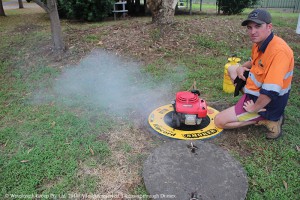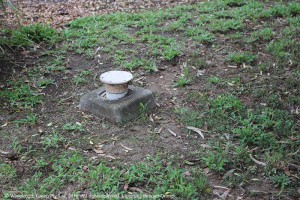Smoking Out Sewerage Issues
WHEN it rains in Scone the already stretched sewerage system is subject to a deluge of storm water and Council does not know where the excess water is entering the sewer.
Namits have been contracted to spend the next couple of months testing the sewerage system to the west of the New England Highway.
Storm water typically enters the sewerage from people illegally connecting their storm water to the sewerage, unsealed sewerage manholes, maintenance shaft with broken caps or surcharge gullies which are low lying or have broken caps.
Matt Brown, manager of Namits will be using smoke to test the local sewerage system and identify where storm water may be entering.
“Many people don’t know where their maintenance shaft are in their yard, much less that the cover is broken,” said Mr Brown.
“They can be hard to find, under a pot, in a chicken yard, all kinds of places and it is always a good idea to know where it is so that if you do have a problem with your sewerage you know where to start,” he said.
“If the top of them is broken it is a fairly simple to fix, it’s really only five minutes work and most people can do it themselves,” he said.
“The sewerage system is built to take small flows, when you flush a toilet it is only 12 litres, but if a roof is connected when it rains the flow is flat out,” he said.
“It may only be a few houses which can cause a significant problem for the sewerage,” Matt Brown said.
An artificially created odourless smoke-mist, which does not pose any hazard, is pumped into the sewerage system and will be visible at points where storm water may be entering the sewerage.
Residents living in streets to be tested will be notified by letter box drop, to arrange for Namits to access outside sewerage and storm water points.
 scone.com.au
scone.com.au
